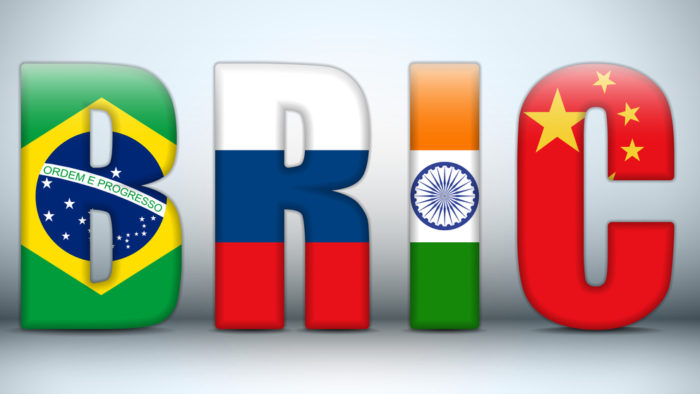Published in Nikkei Asian Review 21/11/2013
“Never make predictions, especially about the future.” Perhaps researchers at Citi should have heeded the wise words of Yogi Berra* before forecasting that Egypt would be one of the world’s Top 10 economies by the year 2050.
The seers of Citi made their call in 2011, at the peak of euphoria about the buoyant economies of the emerging world and, not coincidentally, pessimism about the over-consuming, over-leveraged developed economies.
They will have arrived at their conclusion by deploying that modern-day version of the crystal ball, a spreadsheet. Plug in GDP growth of 6.2% over the next forty years for Egypt versus 1% for Japan and 1.5% for Germany and – hey presto! – the land of the pyramids morphs into a mid-century powerhouse.
Bulling up Egypt’s potential was merely an extreme example of the prevalent hype about emerging markets. As is well established now, the financial markets are plagued with psychological biases. Two that accompany almost every significant boom-bust cycle are herding behaviour and the tendency to extrapolate the recent past into the far future. The emerging markets – exotic and poorly understood, like the internet in 1999 – provided fertile ground for such biases to operate.
New jargon , preferably an acronym , comes with the territory. The dotcom bubble brought us TMT (Technology, Media, Telecoms). A few years later Goldman Sachs economist Jim O’Neill gave birth to the BRICs (Brazil, Russia, India, China) which subsequently became a household term. So successful was O’Neil’s coinage that in 2006 the four constituents began to arrange annual summits – a classic case of believing your own publicity.

O’Neill’s timing was impeccable. After the Asian crises of the late 1990s, assets in the emerging economies were inexpensive. The floods of liquidity produced by Western central banks had to be soaked up somewhere. In 2002, private sector capital flows into emerging countries totalled just $200 billion. By 2007, the peak year, the net inflow had swollen to $1.2 trillion and has remained at around $1 trillion ever since.
The investment results have been mixed. The BRICs markets did well in the halcyon period from 2003 to 2008, but since then returns have been disappointing, with Morgan Stanley’s BRIC index underperforming the American and German stock markets by about 50%. Hopes that the emerging world would “decouple” by producing higher returns than the crisis-raddled Western economies were comprehensively dashed.
The reality is that the investment case for the BRICs was always flawed. Academics from the London Business School have pored over one hundred and ten years of data from nineteen stock markets and found no relationship between investment returns and GDP growth. Like the stocks of high growth companies, the stock markets of high growth countries may or may not prove good investments. It all depends on the price you pay.
But the disappointments are by no means restricted to the world of finance. The recent deterioration in economic performance has been too severe to be ignored. Brazil, Russia and India have experienced sharp decelerations in real growth, while inflation has remained stubbornly high, in the 6-10% band. This 1970s-style configuration could turn more malign if the Western central banks succeed in their unstated goal of increasing global inflation.
China is a different story, as it always was. The country continues to post high growth numbers and inflation is subdued. However, the explosive rise in the credit-to-GDP ratio of the past five years is a clear warning sign. Policy-makers appear torn between managing the transition to a consumption-driven economy and averting slowdown through bursts of fiscal and monetary stimulus.
From the get-go the BRICs never had much in common. Russia and Brazil are highly dependent on the commodity cycle, now well past its peak. India has a handful of highly competitive service sector companies, but lacks the depth of manufacturing to provide employment for its impoverished masses. China has been the great success story, but is fast approaching the Lewis Point when the excess supply of workers dwindles and soaring labour costs crush profit margins. For now on Chinese workers will be competing with cheaper workers from less developed economies, not expensive Westerners.
In many parts of the emerging world, slower growth has led to social and ethnic strife and highlighted issues of inequality, political legitimacy and corruption. Such events come as a reminder of how difficult it has been for rising nations to avoid the middle income trap. In the twentieth century, the only “emerging economies” with substantial populations to have managed it are Japan, South Korea and Taiwan – and in each case the ride was bumpy.
Cynics have dismissed the BRICs as a “Bloody Ridiculous Investment Concept.” That’s a little unfair. It was a handy moniker for a dramatic transformation in the global structure of wealth and power. Still the emerging world faces its own profound challenges, which are primarily institutional and political. Change here, unlike in economic policy, can rarely be planned from above.
The strength of the developed countries is their ability to contain tensions and weather crises within an agreed framework. This didn’t appear overnight, but resulted from a complex historical process of trial-and-error. Underestimating the risks that emerging countries face on the long journey ahead does them no favours – and is likely to give investors some unwelcome shocks along the way.
*Also attributed to Sam Goldwyn, Mark Twain and physicist Niels Bohr.
